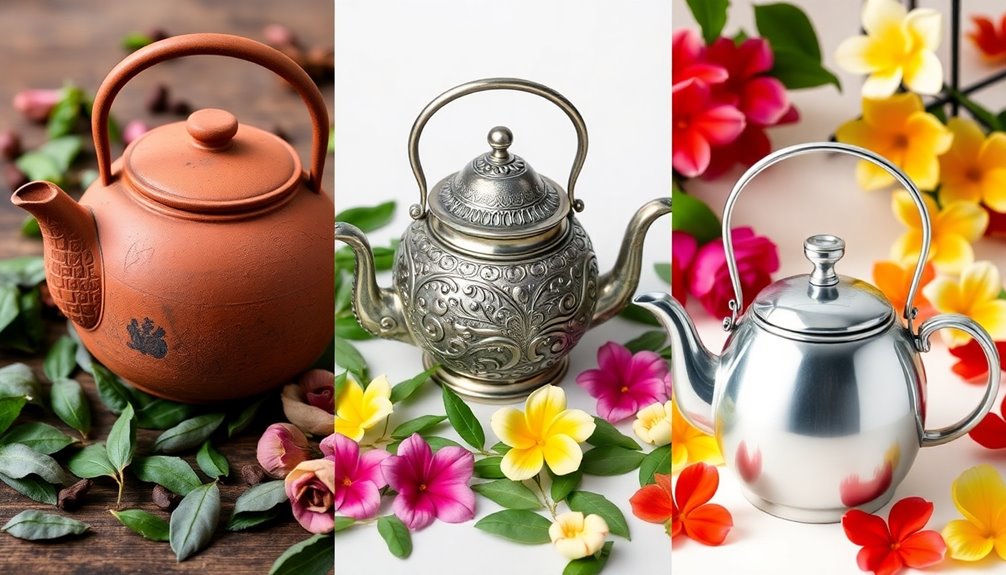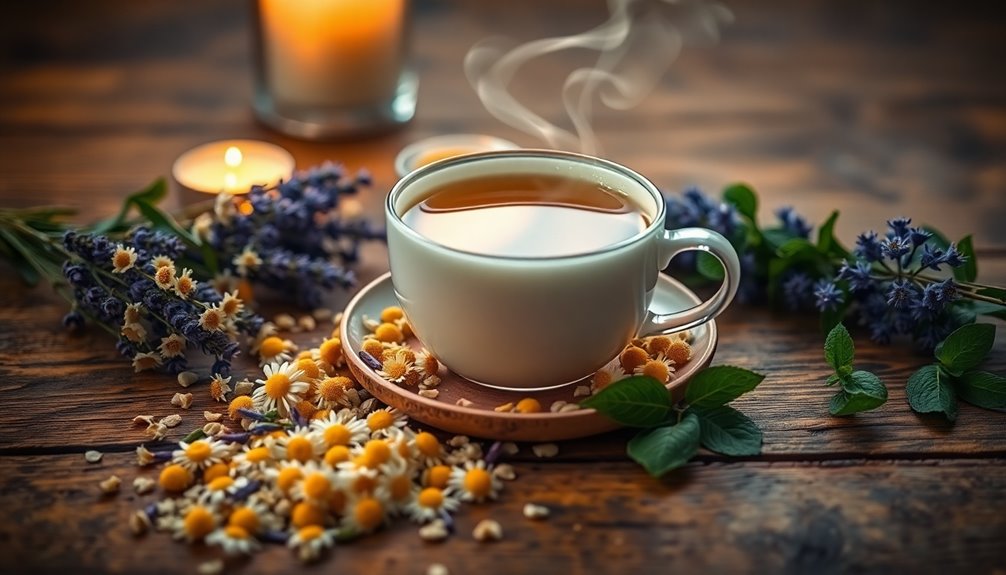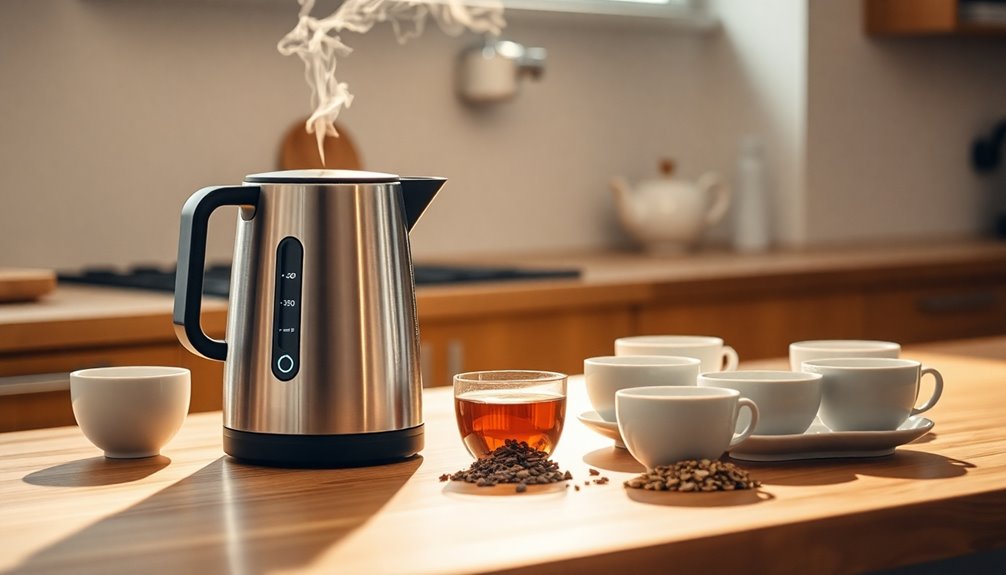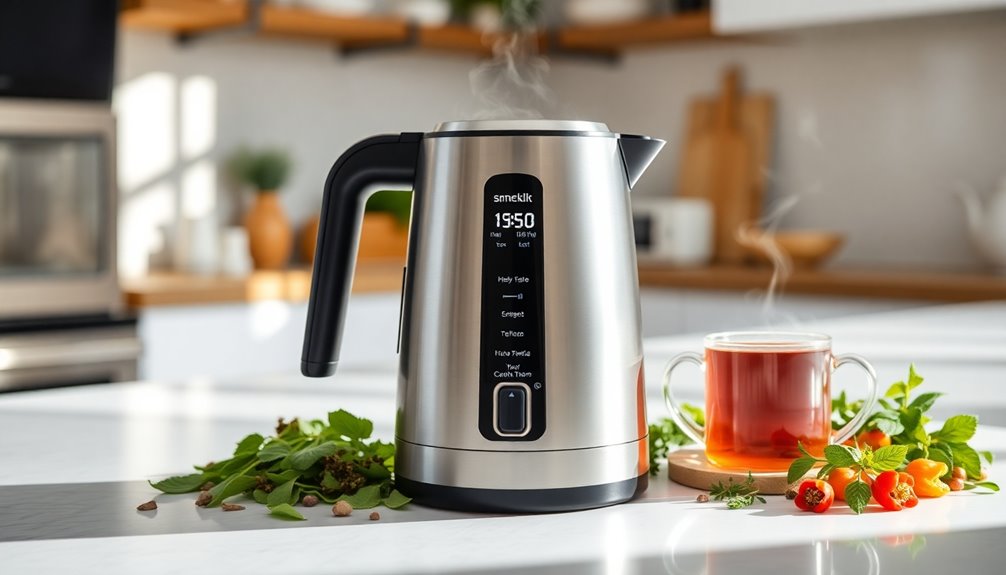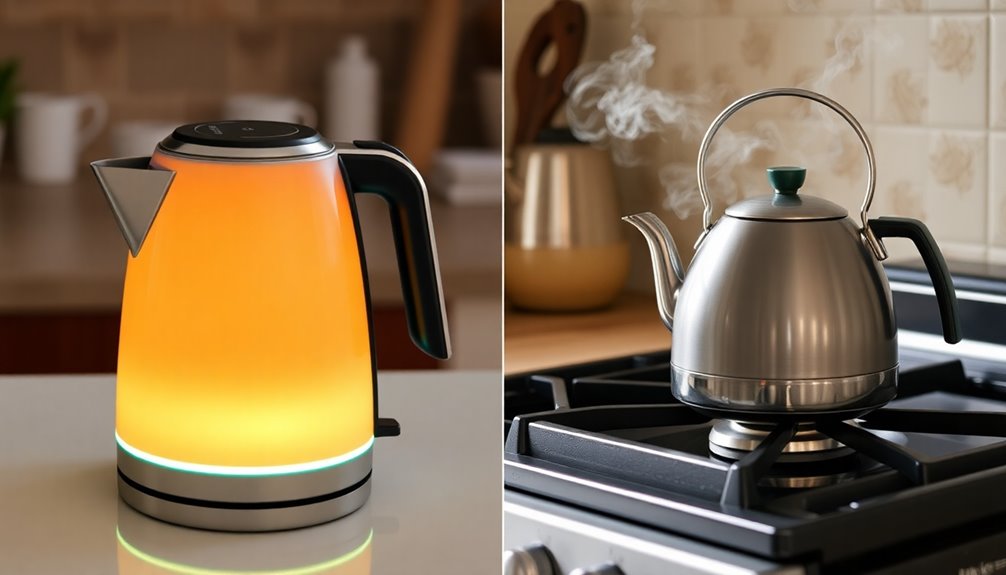Teapots have an exciting journey from functional objects to beautiful art pieces. They first appeared in 15th century China as wine pots and later transformed into essential tea-brewing tools. In cultures like China, Japan, and Britain, teapots represent tradition and social rituals. Over time, their designs evolved, with influences from Asian artistry and European styles. They even became symbols of political resistance, like during the Boston Tea Party. Today, debates about cultural appreciation and authenticity surround modern teapots. If you're curious about how these aspects connect, there's much more to explore!
Key Takeaways
- Teapots originated in 15th century China, initially serving as wine pots before evolving into essential tea brewing vessels.
- The design of teapots reflects cultural significance, with variations like Yixing clay and Japanese Kyūsu emphasizing artistry and tradition.
- The transition of teapots from functional items to decorative art pieces occurred during the European adoption of Asian styles in the 17th century.
- Teapots have served as political symbols, notably during the Boston Tea Party, reflecting their role in social and political discourse.
- Contemporary teapot designs highlight creativity and sustainability, influenced by movements like the 1970s Memphis Group, bridging function and art.
Introduction
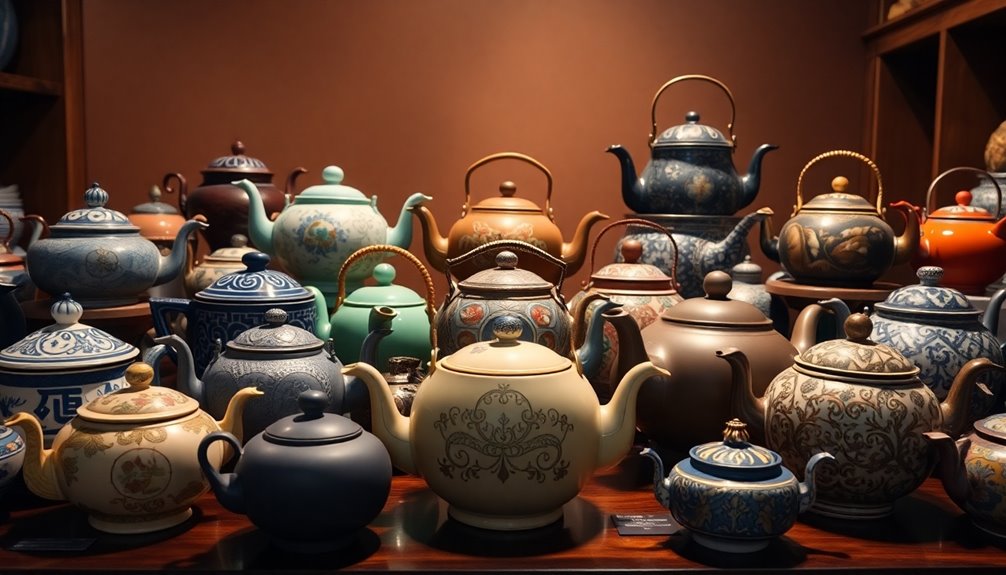
Teapots have come a long way since their humble origins in 15th century China, where they first emerged as wine pots before transforming into the essential vessels we know today for brewing tea.
During the Yuan Dynasty, the first written records of teapots appeared, marking the beginning of a rich tea culture. Early teapots were made from clay and porcelain, showcasing the craftsmanship of skilled artisans.
As tea became popular in Britain during the 17th century, the design of teapots changed significantly.
They began to reflect unique styles influenced by both Chinese and Japanese artistry. This fusion resulted in beautiful ceramic teapots that weren't just for brewing tea but also became decorative art pieces.
Cultural Significance in Ceremonies
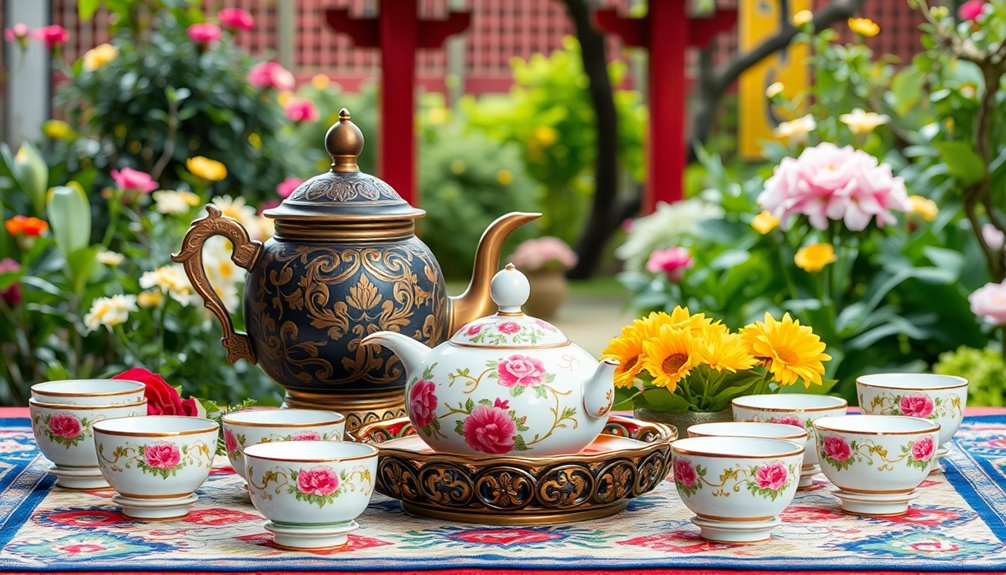
Emphasizing their importance in various cultural ceremonies, teapots serve not just as functional items but as symbols of tradition and artistry.
In the Chinese Gongfu tea ceremony, for example, the teapot, often made from Yixing clay, enhances the flavor of the tea through its unique properties. You'll find that this ceremony emphasizes precision and artistry in every pour.
In Japan, the kyūsu is the go-to teapot for brewing Japanese green tea. Its design, featuring a side handle and bottom spout, reflects the careful attention to detail that's central to Japanese culture.
Moroccan tea rituals showcase ornate teapots, representing hospitality and community. Pouring tea from a height creates a delightful experience that brings everyone together.
Then there's British afternoon tea, a charming tradition with fine china teapots that exude elegance. Often adorned with beautiful floral designs, these teapots enhance the entire ceremony.
Across the globe, teapots adapt to local customs, embodying cultural significance in social gatherings.
Whether it's a quiet moment or a lively celebration, teapots unite people and showcase their unique traditions.
Evolution of Teapot Designs
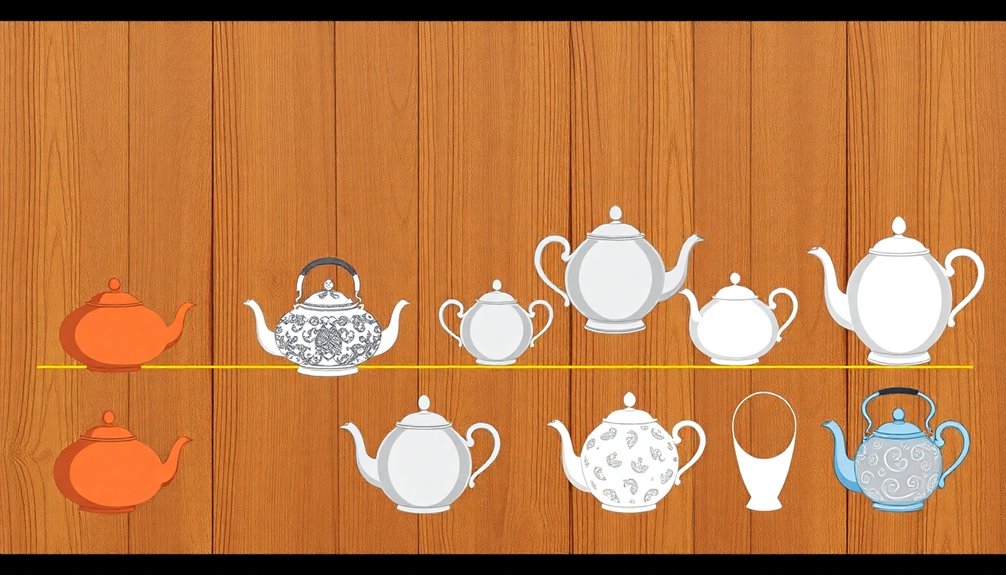
Over the centuries, teapot designs have evolved significantly, reflecting changes in culture, technology, and aesthetics. The earliest known teapot dates back to China's Song Dynasty, between 960 and 1279. These original teapots evolved from wine pots, transitioning to steeping tea leaves instead of using powdered tea.
By the 14th century, specialized teapots made from materials like purple zisha clay and porcelain tea emerged, accommodating new steeping methods.
When teapots first appeared in Europe during the 17th century, they were heavily inspired by Asian styles, particularly Yixing teapots. This influence led to unique shapes, such as the pear-shaped teapot, which became standard in English silverware.
The 18th century brought even more innovation, including teapots on stands with burners, reflecting the Rococo and Neoclassical aesthetics.
Today, modern design embraces creativity, with the 1970s Memphis Group introducing bold shapes and sustainable materials, blurring the lines between function and art.
As you explore the evolution of teapot designs, you'll see how these vessels have transformed from simple tools into beautiful works of art, each telling a story of the rich History of Tea.
Teapots as Political Symbols
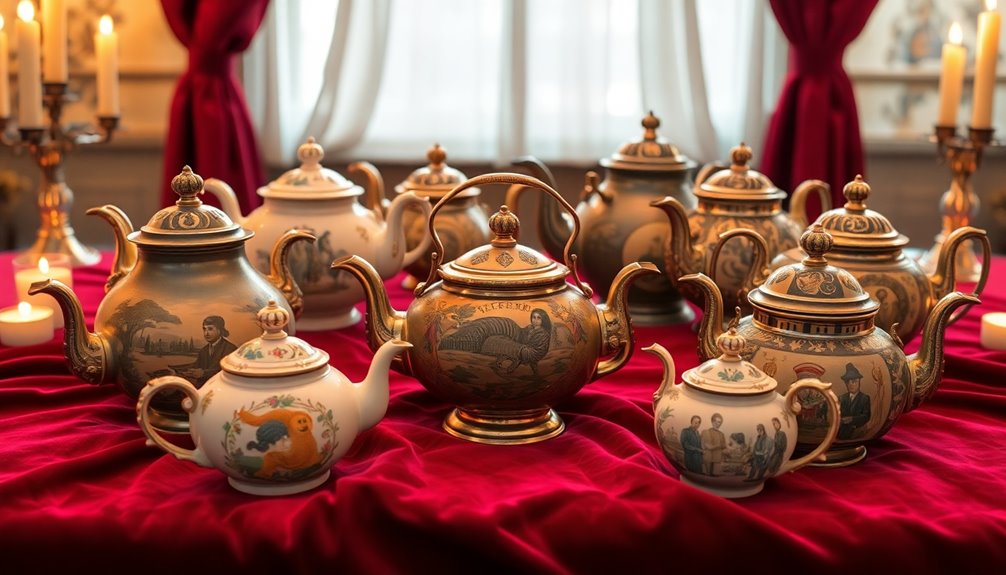
Throughout history, the humble teapot has served as more than just a vessel for brewing tea; it's become a powerful political symbol. One of the most famous events was the Boston Tea Party in 1773, where American colonists protested British taxation by dumping tea into Boston Harbor. This act symbolized their resistance to British rule and their fight for independence.
In Britain, tea drinking among the elite became a sign of wealth and status during the 18th century. Ornate teapots represented sophistication and social power. The introduction of the tea caddy also showed how tea was a luxury good, with lockable designs indicating the importance of protecting expensive tea.
During the Victorian era, themed teapots celebrated British colonial achievements, further linking tea drinking to national pride.
The British East India Company's control over the tea trade during the Opium Wars highlighted how tea was involved in colonial politics and economic exploitation.
Cultural Appropriation Debates
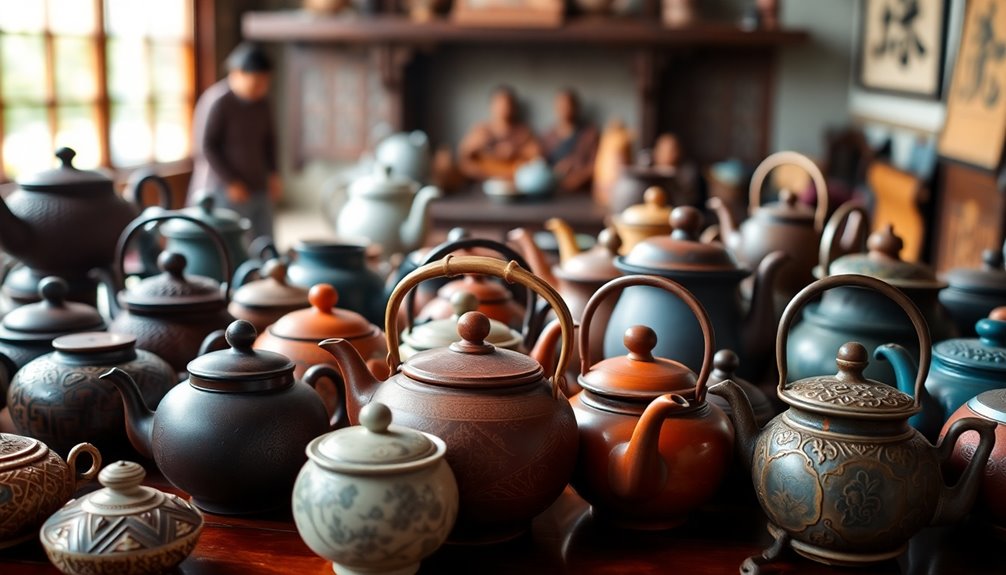
The evolution of teapots as political symbols naturally leads to discussions about cultural appropriation, particularly as different societies have embraced and modified teapot designs over time.
For instance, Yixing teapots are a proud part of Chinese tea culture, made from special purple clay. When Western markets replicate these teapots, it raises questions about authenticity and respect for the artisanship involved.
Similarly, Japanese Raku teapots, which play a vital role in the Japanese tea ceremony, face similar issues. If these designs are used commercially without understanding their cultural significance, it can feel disrespectful.
British adaptations of teapots during the colonial era often borrowed elements from both Chinese and Japanese styles. This blending creates debates on who really owns these cultural symbols, especially in Western contexts.
Today, contemporary artists walk a fine line between homage and cultural appropriation. They must think about ethical considerations when sourcing cultural motifs and techniques for their teapot creations.
It's essential to appreciate the rich histories behind these designs and to honor the traditions they represent. By doing so, we can celebrate teapots as beautiful art pieces while respecting their cultural roots.
Practical Applications
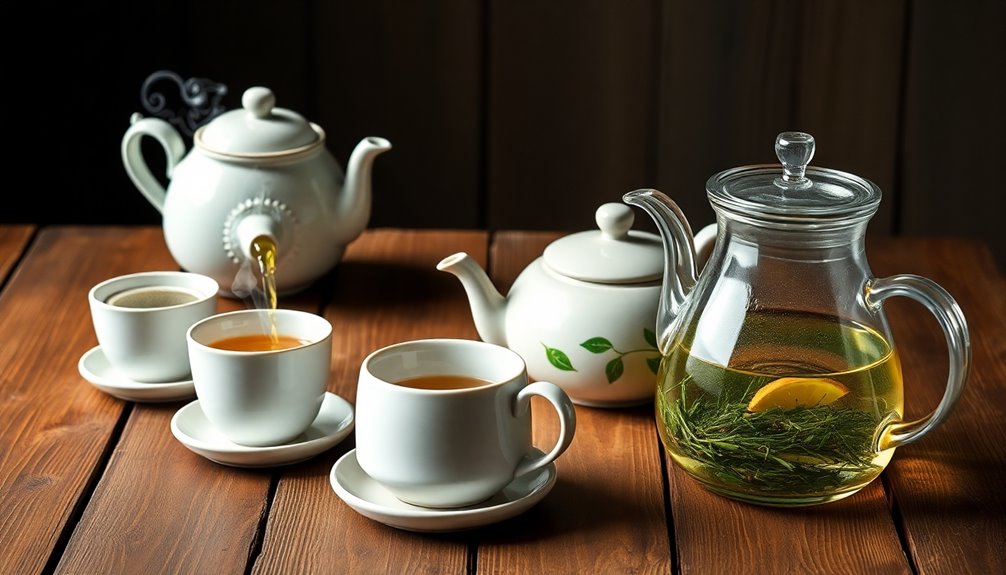
Choosing the right teapot can elevate your tea experience significantly. When you boil water and steep loose-leaf tea, the teapot you choose makes all the difference.
Materials matter, too! Porcelain, Yixing clay, and glass each offer unique benefits, affecting heat retention and flavor infusion. For example, a silver teapot not only looks elegant but also keeps your tea warm longer.
Modern teapots come with practical applications you'll love. Many have built-in infusers, making it easier to brew your favorite loose-leaf tea without worrying about leaves floating around.
Plus, you can find double-walled options that keep your tea hot while ensuring the outside stays cool to touch.
When selecting a teapot, think about size. A smaller pot works for solo tea time, while a larger one is perfect for gatherings with friends.
Don't forget maintenance practices! Avoid using abrasive cleaners, and make sure to dry your teapot thoroughly to keep it looking beautiful. Additionally, the choice of teapot can influence the health benefits of tea, as different materials may affect the infusion of antioxidants in your brew.
Frequently Asked Questions
What Is the Origin of a Teapot?
The teapot originated in China around the 15th century, evolving from earlier brewing vessels. Its design changed over time, reflecting cultural shifts and the transition from powdered to leaf tea during the Ming Dynasty.
What Do Teapots Symbolize?
Teapots symbolize hospitality, connection, and cultural heritage. When you share tea, you're fostering relationships and traditions. They represent not just a beverage vessel, but also social status, artistry, and historical significance within various communities.
Why Are Teapots Shaped the Way They Are?
Teapots are shaped for optimal functionality and aesthetics. Their spouts ensure smooth pouring, while ergonomic handles enhance comfort. Shapes like pear or cylindrical reflect cultural influences, blending practicality with beauty for an enjoyable tea experience.
What Is the History of Yixing Teapots?
Yixing teapots originated in China during the Ming Dynasty, crafted from unique zisha clay. Their minimalist designs emphasize simplicity and harmony, enhancing tea flavors over time, making them treasured by connoisseurs and collectors alike.
Conclusion
Teapots aren't just for brewing tea; they tell stories! From their roles in ceremonies to their unique designs, each teapot reflects culture and history. Some even spark important conversations about art and politics. Next time you see a teapot, think about its journey and what it represents. Whether you're using one or admiring it as art, you're part of a rich tradition. So, enjoy your tea and appreciate the beauty of teapots!

